This site uses cookies as defined in our Cookie Policy, by continuing to use this site you agree to their use.
Continue
| Arrive | Depart | ||||||
| 1st01 | OctOct | 202525 | Civitavecchia, Italy, embark on the Norwegian Epic | 16:00 | |||
Italy's vibrant capital lives in the present, but no other city on earth evokes its past so powerfully. For over 2,500 years, emperors, popes, artists, and common citizens have left their mark here. Archaeological remains from ancient Rome, art-stuffed churches, and the treasures of Vatican City vie for your attention, but Rome is also a wonderful place to practice the Italian-perfected il dolce far niente, the sweet art of idleness. Your most memorable experiences may include sitting at a caffè in the Campo de' Fiori or strolling in a beguiling piazza. | |||||||
| 2nd02 | OctOct | 202525 | At Sea | ||||
| 3rd03 | OctOct | 202525 | Piraeus, Greece | 13:00 | 22:00 | ||
It's no wonder that all roads lead to the fascinating and maddening metropolis of Athens. Lift your eyes 200 feet above the city to the Parthenon, its honey-color marble columns rising from a massive limestone base, and you behold architectural perfection that has not been surpassed in 2,500 years. But, today, this shrine of classical form dominates a 21st-century boomtown. To experience Athens—Athína in Greek—fully is to understand the essence of Greece: ancient monuments surviving in a sea of cement, startling beauty amid the squalor, tradition juxtaposed with modernity. Locals depend on humor and flexibility to deal with the chaos; you should do the same. The rewards are immense. Although Athens covers a huge area, the major landmarks of the ancient Greek, Roman, and Byzantine periods are close to the modern city center. You can easily walk from the Acropolis to many other key sites, taking time to browse in shops and relax in cafés and tavernas along the way. From many quarters of the city you can glimpse "the glory that was Greece" in the form of the Acropolis looming above the horizon, but only by actually climbing that rocky precipice can you feel the impact of the ancient settlement. The Acropolis and Filopappou, two craggy hills sitting side by side; the ancient Agora (marketplace); and Kerameikos, the first cemetery, form the core of ancient and Roman Athens. Along the Unification of Archaeological Sites promenade, you can follow stone-paved, tree-lined walkways from site to site, undisturbed by traffic. Cars have also been banned or reduced in other streets in the historical center. In the National Archaeological Museum, vast numbers of artifacts illustrate the many millennia of Greek civilization; smaller museums such as the Goulandris Museum of Cycladic Art Museum and the Byzantine and Christian Museum illuminate the history of particular regions or periods. Athens may seem like one huge city, but it is really a conglomeration of neighborhoods with distinctive characters. The Eastern influences that prevailed during the 400-year rule of the Ottoman Empire are still evident in Monastiraki, the bazaar area near the foot of the Acropolis. On the northern slope of the Acropolis, stroll through Plaka (if possible by moonlight), an area of tranquil streets lined with renovated mansions, to get the flavor of the 19th-century's gracious lifestyle. The narrow lanes of Anafiotika, a section of Plaka, thread past tiny churches and small, color-washed houses with wooden upper stories, recalling a Cycladic island village. In this maze of winding streets, vestiges of the older city are everywhere: crumbling stairways lined with festive tavernas; dank cellars filled with wine vats; occasionally a court or diminutive garden, enclosed within high walls and filled with magnolia trees and the flaming trumpet-shaped flowers of hibiscus bushes. Formerly run-down old quarters, such as Thission, Gazi and Psirri, popular nightlife areas filled with bars and mezedopoleia (similar to tapas bars), are now in the process of gentrification, although they still retain much of their original charm, as does the colorful produce and meat market on Athinas. The area around Syntagma Square, the tourist hub, and Omonia Square, the commercial heart of the city about 1 km (½ mi) northwest, is distinctly European, having been designed by the court architects of King Otho, a Bavarian, in the 19th century. The chic shops and bistros of ritzy Kolonaki nestle at the foot of Mt. Lycabettus, Athens's highest hill (909 feet). Each of Athens's outlying suburbs has a distinctive character: in the north is wealthy, tree-lined Kifissia, once a summer resort for aristocratic Athenians, and in the south and southeast lie Glyfada, Voula, and Vouliagmeni, with their sandy beaches, seaside bars, and lively summer nightlife. Just beyond the city's southern fringes is Piraeus, a bustling port city of waterside fish tavernas and Saronic Gulf views. | |||||||
| 4th04 | OctOct | 202525 | Santorini, Greece | 08:00 | 22:00 | ||
Undoubtedly the most extraordinary island in the Aegean, crescent-shape Santorini remains a mandatory stop on the Cycladic tourist route—even if it's necessary to enjoy the sensational sunsets from Ia, the fascinating excavations, and the dazzling white towns with a million other travelers. Called Kállisti (the "Loveliest") when first settled, the island has now reverted to its subsequent name of Thira, after the 9th-century-BC Dorian colonizer Thiras. The place is better known, however, these days as Santorini, a name derived from its patroness, St. Irene of Thessaloniki, the Byzantine empress who restored icons to Orthodoxy and died in 802. You can fly conveniently to Santorini, but to enjoy a true Santorini rite of passage, opt instead for the boat trip here, which provides a spectacular introduction. After the boat sails between Sikinos and Ios, your deck-side perch approaches two close islands with a passage between them. The bigger one on the left is Santorini, and the smaller on the right is Thirassia. Passing between them, you see the village of Ia adorning Santorini's northernmost cliff like a white geometric beehive. You are in the caldera (volcanic crater), one of the world's truly breathtaking sights: a demilune of cliffs rising 1,100 feet, with the white clusters of the towns of Fira and Ia perched along the top. The bay, once the high center of the island, is 1,300 feet in some places, so deep that when boats dock in Santorini's shabby little port of Athinios, they do not drop anchor. The encircling cliffs are the ancient rim of a still-active volcano, and you are sailing east across its flooded caldera. On your right are the Burnt isles, the White isle, and other volcanic remnants, all lined up as if some outsize display in a geology museum. Hephaestus's subterranean fires smolder still—the volcano erupted in 198 BC, about 735, and there was an earthquake in 1956. Indeed, Santorini and its four neighboring islets are the fragmentary remains of a larger landmass that exploded about 1600 BC: the volcano's core blew sky high, and the sea rushed into the abyss to create the great bay, which measures 10 km by 7 km (6 mi by 4½ mi) and is 1,292 feet deep. The other pieces of the rim, which broke off in later eruptions, are Thirassia, where a few hundred people live, and deserted little Aspronissi ("White isle"). In the center of the bay, black and uninhabited, two cones, the Burnt Isles of Palea Kameni and Nea Kameni, appeared between 1573 and 1925. There has been too much speculation about the identification of Santorini with the mythical Atlantis, mentioned in Egyptian papyri and by Plato (who says it's in the Atlantic), but myths are hard to pin down. This is not true of old arguments about whether tidal waves from Santorini's cataclysmic explosion destroyed Minoan civilization on Crete, 113 km (70 mi) away. The latest carbon-dating evidence, which points to a few years before 1600 BC for the eruption, clearly indicates that the Minoans outlasted the eruption by a couple of hundred years, but most probably in a weakened state. In fact, the island still endures hardships: since antiquity, Santorini has depended on rain collected in cisterns for drinking and irrigating—the well water is often brackish—and the serious shortage is alleviated by the importation of water. However, the volcanic soil also yields riches: small, intense tomatoes with tough skins used for tomato paste (good restaurants here serve them); the famous Santorini fava beans, which have a light, fresh taste; barley; wheat; and white-skin eggplants. | |||||||
| 5th05 | OctOct | 202525 | Mykonos, Greece | 07:00 | 14:00 | ||
Although the fishing boats still go out in good weather, Mykonos largely makes its living from tourism these days. The summer crowds have turned one of the poorest islands in Greece into one of the richest. Old Mykonians complain that their young, who have inherited stores where their grandfathers once sold eggs or wine, get so much rent that they have lost ambition, and in summer sit around pool bars at night with their friends, and hang out in Athens in winter when island life is less scintillating. Put firmly on the map by Jackie O in the 1960s, Mykonos town—called Hora by the locals—remains the Saint-Tropez of the Greek islands. The scenery is memorable, with its whitewashed streets, Little Venice, the Kato Myli ridge of windmills, and Kastro, the town's medieval quarter. Its cubical two- or three-story houses and churches, with their red or blue doors and domes and wooden balconies, have been long celebrated as some of the best examples of classic Cycladic architecture. Luckily, the Greek Archaeological Service decided to preserve the town, even when the Mykonians would have preferred to rebuild, and so the Old Town has been impressively preserved. Pink oleander, scarlet hibiscus, and trailing green pepper trees form a contrast amid the dazzling whiteness, whose frequent renewal with whitewash is required by law. Any visitor who has the pleasure of getting lost in its narrow streets (made all the narrower by the many outdoor stone staircases, which maximize housing space in the crowded village) will appreciate how its confusing layout was designed to foil pirates—if it was designed at all. After Mykonos fell under Turkish rule in 1537, the Ottomans allowed the islanders to arm their vessels against pirates, which had a contradictory effect: many of them found that raiding other islands was more profitable than tilling arid land. At the height of Aegean piracy, Mykonos was the principal headquarters of the corsair fleets—the place where pirates met their fellows, found willing women, and filled out their crews. Eventually the illicit activity evolved into a legitimate and thriving trade network. Morning on Mykonos town's main quay is busy with deliveries, visitors for the Delos boats, lazy breakfasters, and street cleaners dealing with the previous night's mess. In late morning the cruise-boat people arrive, and the shops are all open. In early afternoon, shaded outdoor tavernas are full of diners eating salads (Mykonos's produce is mostly imported); music is absent or kept low. In mid- and late afternoon, the town feels sleepy, since so many people are at the beach, on excursions, or sleeping in their air-conditioned rooms; even some tourist shops close for siesta. By sunset, people have come back from the beach, having taken their showers and rested. At night, the atmosphere in Mykonos ramps up. The cruise-boat people are mostly gone, coughing three-wheelers make no deliveries in the narrow streets, and everyone is dressed sexy for summer and starting to shimmy with the scene. Many shops stay open past midnight, the restaurants fill up, and the bars and discos make ice cubes as fast as they can. Ready to dive in? Begin your tour of Mykonos town (Hora) by starting out at its heart: Mando Mavrogenous Square. | |||||||
| 6th06 | OctOct | 202525 | Katakolon, Greece | 07:30 | 16:30 | ||
Katakolon could not seem less of a cruise port if it tried. A tiny enclave clinging to the western Peloponnese coast, it's a sleepy place except when ships dock. But it's a popular cruise destination because of its proximity to Olympia. Ancient Olympia was one of the most important cities in classical Greece. The Sanctuary of Zeus was the city's raison d'être, and attracted pilgrims from around the eastern Mediterranean, and later the city played host to Olympic Games, the original athletic games that were the inspiration for today's modern sporting pan-planetary meet. At the foot of the tree-covered Kronion hill, in a valley near two rivers, Katakolon is today one of the most popular ancient sites in Greece. If you don't want to make the trip to Olympia, then Katakolon is an ideal place for a leisurely Greek lunch while you watch the fishermen mend their nets, but there's just not much else to do there. | |||||||
| 7th07 | OctOct | 202525 | Valletta, Malta | 11:00 | 21:00 | ||
Malta's capital, the minicity of Valletta, has ornate palaces and museums protected by massive fortifications of honey-color limestone. Houses along the narrow streets have overhanging wooden balconies for people-watching from indoors. Generations ago they gave housebound women a window on the world of the street. The main entrance to town is through the City Gate (where all bus routes end), which leads onto Triq Repubblika (Republic Street), the spine of the grid-pattern city and the main shopping street. Triq Mercante (Merchant Street) parallels Repubblika to the east and is also good for strolling. From these two streets, cross streets descend toward the water; some are stepped. Valletta's compactness makes it ideal to explore on foot. City Gate and the upper part of Valletta are experiencing vast redevelopment that includes a new Parliament Building and open-air performance venue. The complex, completed mid-2013, has numerous pedestrian detours in place along with building noise and dust. Before setting out along Republic Street, stop at the tourist information office on Merchant Street for maps and brochures. | |||||||
| 8th08 | OctOct | 202525 | Messina, Italy | 08:00 | 18:00 | ||
Home to the Museo Regionale of Messina, known for featuring two of Caravaggio's paintings, the city is also famous for having been the capital of the ancient kingdom of Sicily. | |||||||
| 9th09 | OctOct | 202525 | Salerno, Italy | 06:30 | 15:00 | ||
Salerno is an Italian city located on the Gulf of Salerno. Famous for being home to the first medical university, Salerno is a great destination for anyone looking for gorgeous sea views filled with sunshine and Italian food. | |||||||
| 10th10 | OctOct | 202525 | Livorno, Italy | 09:00 | 20:30 | ||
Livorno is a gritty city with a long and interesting history. In the early Middle Ages it alternately belonged to Pisa and Genoa. In 1421 Florence, seeking access to the sea, bought it. Cosimo I (1519–74) started construction of the harbor in 1571, putting Livorno on the map. After Ferdinando I de' Medici (1549–1609) proclaimed Livorno a free city, it became a haven for people suffering from religious persecution; Roman Catholics from England and Jews and Moors from Spain and Portugal, among others, settled here. The Quattro Mori (Four Moors), also known as the Monument to Ferdinando I, commemorates this. (The statue of Ferdinando I dates from 1595, the bronze Moors by Pietro Tacca from the 1620s.)In the following centuries, and particularly in the 18th, Livorno boomed as a port. In the 19th century the town drew a host of famous Britons passing through on their grand tours. Its prominence continued up to World War II, when it was heavily bombed. Much of the town's architecture, therefore, postdates the war, and it's somewhat difficult to imagine what it might have looked like before. Livorno has recovered from the war, however, as it's become a huge point of departure for container ships, as well as the only spot in Tuscany for cruise ships to dock for the day.Most of Livorno's artistic treasures date from the 17th century and aren't all that interesting unless you dote on obscure baroque artists. Livorno's most famous native artist, Amedeo Modigliani (1884–1920), was of much more recent vintage. Sadly, there's no notable work by him in his hometown.There may not be much in the way of art, but it's still worth strolling around the city. The Mercato Nuovo, which has been around since 1894, sells all sorts of fruits, vegetables, grains, meat, and fish. Outdoor markets nearby are also chock-full of local color. The presence of Camp Darby, an American military base just outside town, accounts for the availability of many American products.If you have time, Livorno is worth a stop for lunch or dinner at the very least. | |||||||
| 11th11 | OctOct | 202525 | Civitavecchia, Italy, disembark the Norwegian Epic | 06:15 | |||
Italy's vibrant capital lives in the present, but no other city on earth evokes its past so powerfully. For over 2,500 years, emperors, popes, artists, and common citizens have left their mark here. Archaeological remains from ancient Rome, art-stuffed churches, and the treasures of Vatican City vie for your attention, but Rome is also a wonderful place to practice the Italian-perfected il dolce far niente, the sweet art of idleness. Your most memorable experiences may include sitting at a caffè in the Campo de' Fiori or strolling in a beguiling piazza. | |||||||











The images shown are for illustration purposes only and may not be an exact representation of what you find on the ship.
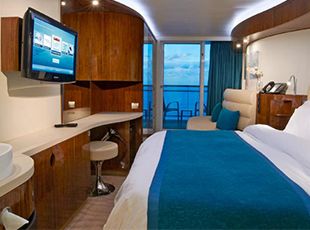
Norwegian Epic Balcony Staterooms have room for up to three guests and feature floor-to-ceiling glass doors that open to a private balcony with an incredible view. They include two lower beds that convert into a queen-size bed, a sitting area and additional bedding to accommodate one more. These staterooms feature curved walls, a unique bathroom treatment where every area is separate, including the shower and a modern vanity sink.

Norwegian Epic Inside Staterooms are a great and affordable accommodation for up to two guests. They feature a separate bathroom with shower and two lower beds that convert into a queen-size bed.

These Large Balcony Staterooms can accommodate up to three guests. They include two lower beds that convert into a queen-size bed and additional bedding to accommodate two more. These staterooms feature curved walls, a unique bathroom treatment where every area is separate, including the shower and a modern vanity sink, plus a large private balcony that offers you an incredible view.

The Spa Balcony Staterooms can accommodate up to three guests. They include two lower beds that convert into a queen-size bed, a sitting area, a separate shower and additional bedding to accommodate one more guest. You'll also receive entry to the Mandara Spa experience, including complimentary access to the Thermal Suite plus your own private balcony to enjoy the view. Note: Guests under 18 are not allowed in the Thermal Suite.

Cool and hip, right down to the funky lighting and flat screen TV, this exclusive key card access-only category is unlike anything you have ever experienced before. These staterooms have a full size bed for one guest and a window view to the corridor. Studio guests have private key card access to The Living Room, which is a shared private lounge that boasts a bar, two large TV screens and comfy seating for hanging out, reading a book or just enjoying a drink before dinner. Plus, some Studios can connect to each other so you can stay close yet still enjoy your privacy. Awarded "Best Cruise Line for Solo Travellers" by Porthole Magazine in 2012; Norwegian Epic is the ship of choice that was specifically designed and priced for the solo traveller. (No single supplement required.)
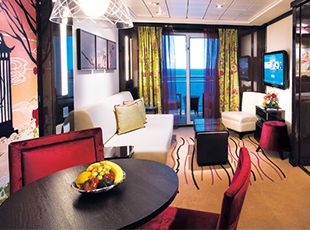
With a living room, dining area, separate bedroom with queen-size bed and private balcony, Norwegian Epic Villas have a maximum capacity of six and are perfect for the whole family. They feature two bathrooms, additional bedding to accommodate four more guests and exclusive access to the Courtyard area, The Haven Lounge and private restaurant and bar. Includes butler and concierge service. Some can connect.
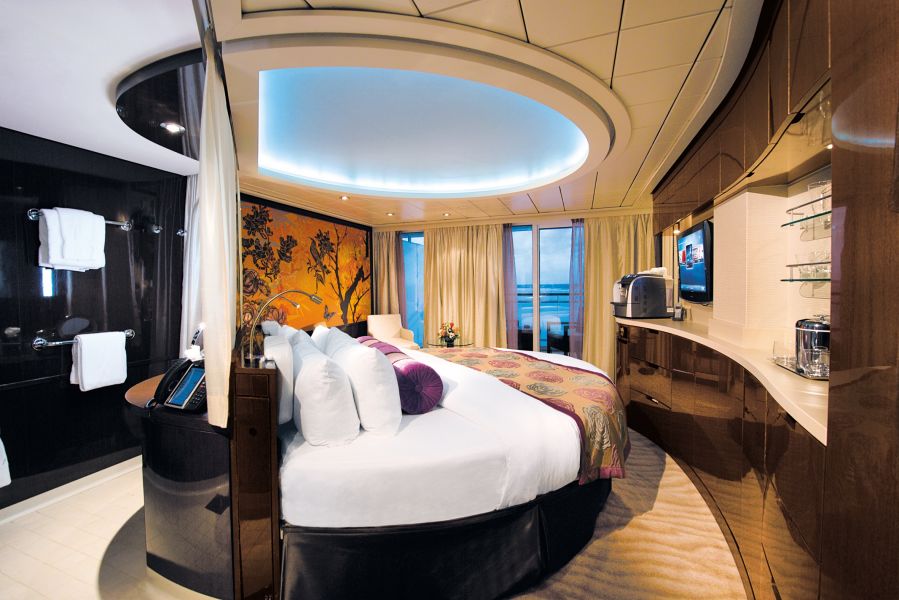
With a maximum capacity of up to three, these Penthouses include a queen-size bed, some with additional bedding for one and luxury shower. In addition to the private balcony with a fantastic view, you'll also have exclusive access to the Courtyard area, The Haven Lounge and private restaurant and bar. Includes butler and concierge service. One can connect to The Haven Deluxe Owner's Suite with Large Balcony.

Norwegian Epic suites with room for up to four boast all around floor-to-ceiling windows. They include a separate bedroom with king-size bed, a living room, separate dining area and a private balcony with an amazing view. You'll also have a luxurious bathroom with separate shower and whirlpool tub, additional bedding to accommodate two more guests and access to the Courtyard area, The Haven Lounge and private restaurant and bar. Includes butler and concierge service. Plus, some can connect to another Deluxe Owner's Suite with Large Balcony or a 2-Bedroom Family Villa with Balcony.
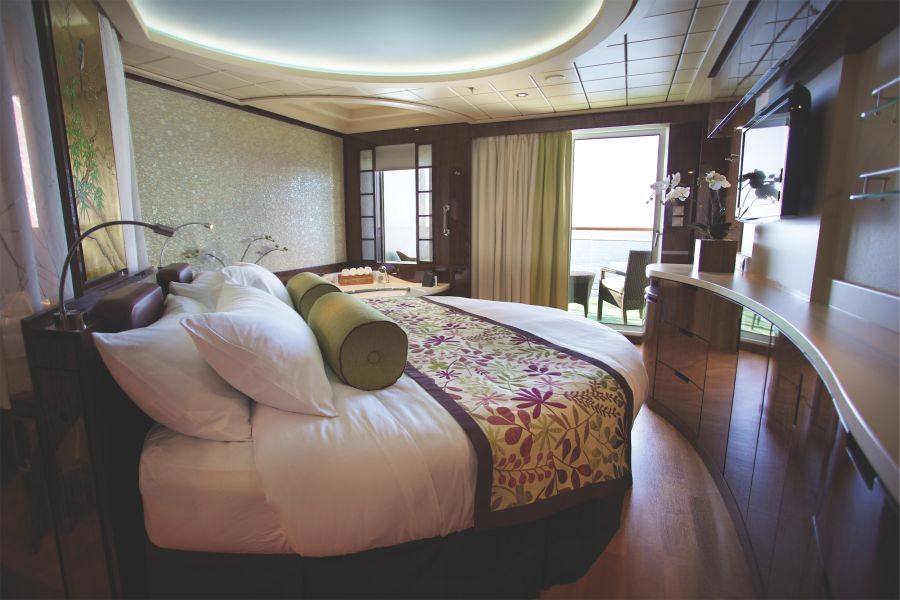
Norwegian Epic Spa Suites, built for two, are a great way to experience a total spa holiday. These suites feature a queen-size bed and entry to the Mandara Spa experience, including complimentary access to the thermal suites. In addition to the private balcony with incredible views and luxury bathroom, you'll also have exclusive access to the Courtyard area, The Haven Lounge and private restaurant and bar. Includes butler and concierge service. Note: Guests under 18 are not allowed in the thermal suites.
The images shown are for illustration purposes only and may not be an exact representation of what you find on the ship.
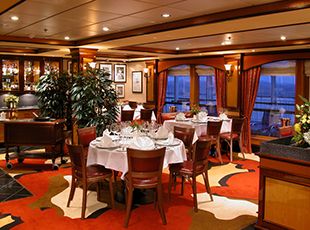
Premium cuts are the standard at our American steakhouse serving Certified Angus Beef®. Sip your favourite cocktail and don’t forget to order our famous Parmesan dusted truffle fries!
Price Per Person: À la carte
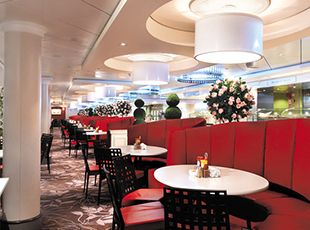
Whatever you’re craving, chances are you will find it at the Garden Café. This complimentary, indoor buffet restaurant serves up breakfast, lunch and dinner
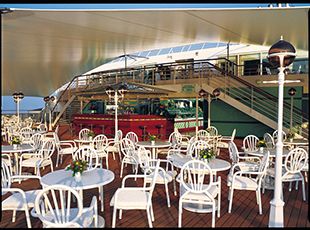
Get your daily dose of fresh ocean air along with a great view of the Aqua Park as you dine on dishes from around the world. Enjoy the delicious buffet for breakfast, lunch or dinner.

Looking for a unique experience? Our authentic Brazilian churrascaria is a must. Start with an impressive salad bar, but save plenty of room for our slow-roasted meats carved tableside by our Passadores.
Price Per Person: Cover Charge Applies.

Available 24 hours a day, simply pick up the phone and order breakfast, lunch, dinner or late-night munchies. A room service fee may apply.
Price Per Person: Room Service Fee may apply.
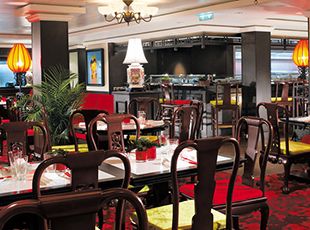
Enjoy a complimentary Asian Fusion dining venue featuring freshly prepared noodles, delicious wok fried dishes, authentic soups, and more.

Serving a wide variety of cuisine, Taste offers a stylish and contemporary atmosphere. Plus, with a menu that changes daily and carefully selected wine recommendations, you'll experience a different culinary adventure with every visit.

Sit at a lively shared table as a skillful chef perfectly prepares shrimp, steak, chicken and fried rice on a large steel grill. And you've got a front row seat to all the sizzles and surprises in our Japanese restaurant.
Price Per Person: Cover Charge Applies
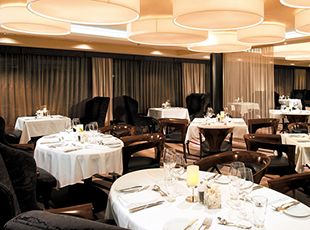
Enjoy a private fine dining experience for guests of The Haven, serving unique signature dishes and wine offerings from our impressive selection.
Price Per Person: Complimentary for guests of The Haven
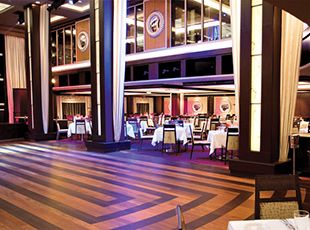
One of three Main Dining Rooms, The Manhattan Room is where guests can enjoy specially curated modern and classic dishes made with the freshest ingredients.
The images shown are for illustration purposes only and may not be an exact representation of what you find on the ship.
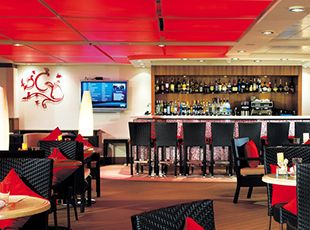
This is the more casual, outdoor area of the Epic Club, exclusive to Suite & Villa guests.
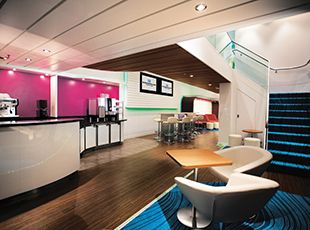
Serving snacks and light fare. Exclusive to guests staying in the Studios.
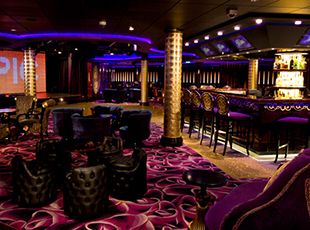
High-voltage tunes make everyone want to dance, custom loungers are the perfect spot to cap off the evening with a cocktail.
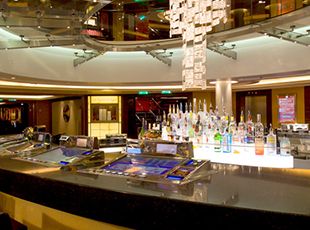
Stay close to the action at the Epic Casino's friendly, full-service bar. It's the perfect place to toast your good fortune and let the good times roll.
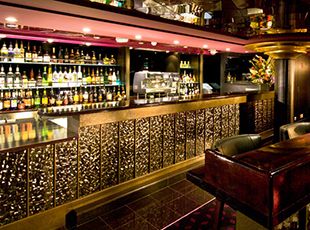
It's "bottoms up" before or after the curtain goes up at this captivating and cordial bar inside the Epic Theatre.

Forget life on land, relax in a lounge chair, work on your tan and sip on a frozen drink at this poolside bar.
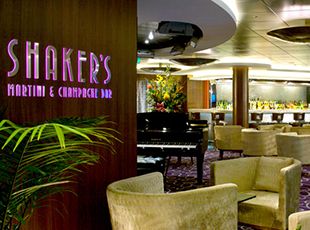
Unwind after a long day of doing whatever and join the martini crowd for a sophisticated cosmopolitan or something more adventurous. Appletini, anyone?
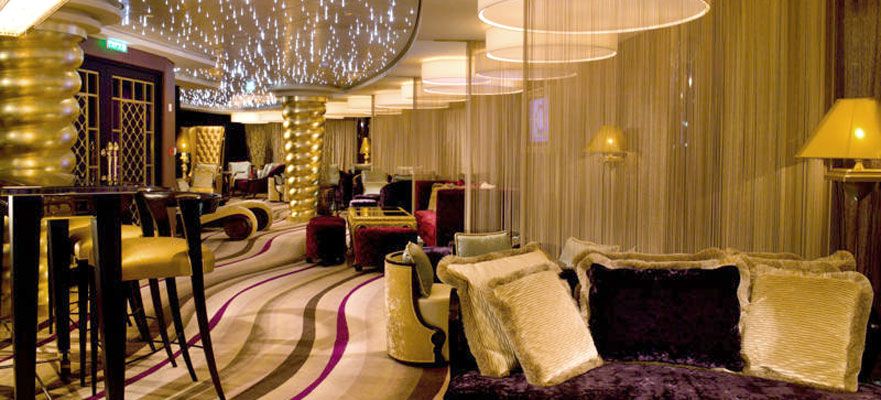
There's nothing quite like The Haven Lounge. Guests of The Haven have exclusive access to this private bar showcasing premium liquors and a salute to the good life.
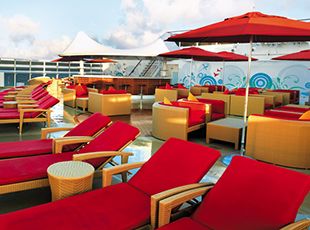
A first of its kind beach club at sea.
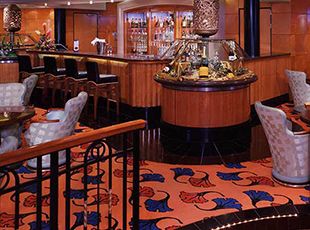
The Sake Bar at Wasabi is the closest you can get to a trip to Japan without getting on a plane. Experience the simple joys of hot sake or go kamikaze with an "ichi. . .ni. . .san" sake bomb.
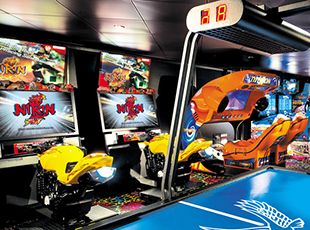
Stop by the Video Arcade and step into a world of fun and games. Capture a few aliens, fly a fighter jet, take the lead in a car race and more. We dare you to set the highest score.
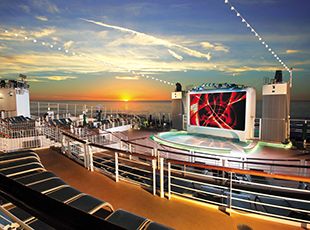
Soak up the sun by day around the pool and dine on the delicious fare of outdoor buffet at our adults-only Ibiza-inspired beach club at the back of the ship. The entertainment is non-stop as the pool floor rises to become a dance floor and giant screen projects hypnotic visuals under a starry sky.

It takes a world-class venue to attract Broadway shows like the heartwarming musical Priscilla, Queen of the Desert. Add in the sizzle and passion of ballroom dancing in Ballroom Blitz and you'll have a night you'll never forget in the Epic Theatre.
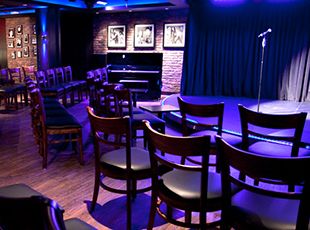
Sing along with Howl at the Moon, the World's Greatest Rock 'N' Roll Dueling Piano Show. In the Caribbean you can also spend an evening or two with The Second City comedy troupe and their unique form of comedy or experience authentic European entertainment with a variety of world-class acts whilst cruising the Mediterranean.
The images shown are for illustration purposes only and may not be an exact representation of what you find on the ship.
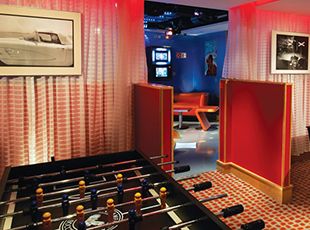
Guaranteed to attract all teens, Entourage is designed like an adult lounge minus the adults. All play during the day, but at night Entourage turns into a teens-only nightclub.
The images shown are for illustration purposes only and may not be an exact representation of what you find on the ship.
| 10 nights aboard the Norwegian Epic | |||
| Upgrade to More At Sea™ for £299pp and receive the benefits shown below. Book a Haven suite or suite (not Club balcony suites) and receive More At Sea™at no additional cost. | |||
| Premium Beverages
Includes alcoholic and non-alcoholic branded drinks served in all bars, lounges and restaurants throughout your cruise. | |||
| Speciality Dining
Enjoy dining opportunities in selected speciality restaurants depending on number of nights and cabin type. | |||
| Shore Excursion Credits
Receive $50 shore excursion credit per stateroom per excursion. | |||
| Wi-Fi Powered By Starlink
Receive up to 150 minutes Wi-FI per person (guest 1 and 2 only) | |||
| 3rd & 4th Guest Pay Taxes Only
Guests 3 and 4 in the stateroom pay only the applicable tax for the cruise. Available on select sailings only. | |||
| Award winning onboard entertainment | |||
| Complimentary 24-hour room service | |||
| Port Taxes and Fees | |||
 | ABTA and ATOL Protection* | ||
Date 1st Oct 2025 |
Nts 10 |
Please Call for Availability |
Date 1st Oct 2025 |
Nts 10 |
Please Call for Availability |
Fusion Cruises when selling travel arrangements is a trading name of The Midcounties Co-operative Ltd. Fusion Cruises is an Accredited Body Member of Midcounties Co-operative Travel Consortium. (ABTA:P6652, ATOL:6053).
Book with Confidence. We are a Member of ABTA which means you have the benefit of ABTA’s assistance and Code of Conduct.
Some of the flights and flight-inclusive holidays on this website are financially protected by the ATOL scheme but ATOL protection does not apply to all holiday and travel services offered on this website. This website will provide you with information on the protection that applies in the case of each holiday and travel service offered before you make your booking. If you do not receive an ATOL Certificate then the booking will not be ATOL protected. If you do receive an ATOL Certificate but all parts of your trip are not listed on it, those parts will not be ATOL protected. Please see our booking conditions for information, or for more information about financial protection and the ATOL Certificate go to: www.caa.co.uk
